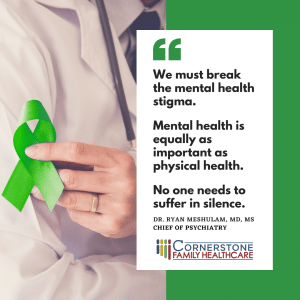Provider blog written by Koreen E. Thomas, FNP.
Breast cancer affects nearly 12% of women in our country today. It is the second most common form of cancer in women and a new case is diagnosed every 2 minutes. Detecting breast cancer early gives you a better chance of successful treatment because the cancer is small and hasn’t yet spread.
What are the Symptoms of Breast Cancer?
Swelling of all or part of a breast, skin irritation or dimpling, breast or nipple pain, change in nipple position (when inverted nipples become erect or when erect nipples become inverted), redness or thickening of the nipple or breast skin, and nipple discharge (other than breast milk when a woman is breastfeeding).
Make Early Detection a Priority
The most common symptom of breast cancer is a new lump. Being familiar with how your breasts look and feel can help you notice symptoms that may be of concern. Performing Breast Self-Examinations is the best way to detect if you have a lump. It is important to report any changes that you notice to your doctor or healthcare provider immediately.
How to Perform a Breast Self-Exam
Step 1: Begin by looking at your breasts in the mirror with your shoulders straight and your arms on your hips. Here’s what you should look for:
- Breasts that are not their usual size, shape, and color
- Breasts that are not evenly shaped or have visible distortion
- Swelling
- Look for any signs of fluid coming out one or both nipples.
Step 2: Raise your arms and look for the same changes.
Step 3: Lie down. Use your right hand to feel your left breast and then your left hand than to feel your right breast. Keep your finger flat and together using small circular motion, about the size of a quarter. Make sure you cover the entire breast from top to bottom, side to side — from your collarbone to the top of your abdomen, and from your armpit to your cleavage.
Step 4: Feel your breast while you are standing or sitting using the same movements as Step 3.
Women are encouraged to perform breast self-exams at least once a month. In women who have their periods, the best time to perform BSE is when their period ends. In non-menstruating women, they should pick the same day each month If you see any changes, report them to your healthcare provider as soon as possible.
If you would like more information about breast cancer, have questions about how to perform a breast self-exam, or are concerned about symptoms that you may have, Cornerstone Family Healthcare provides information and resources that will be able to help you.




